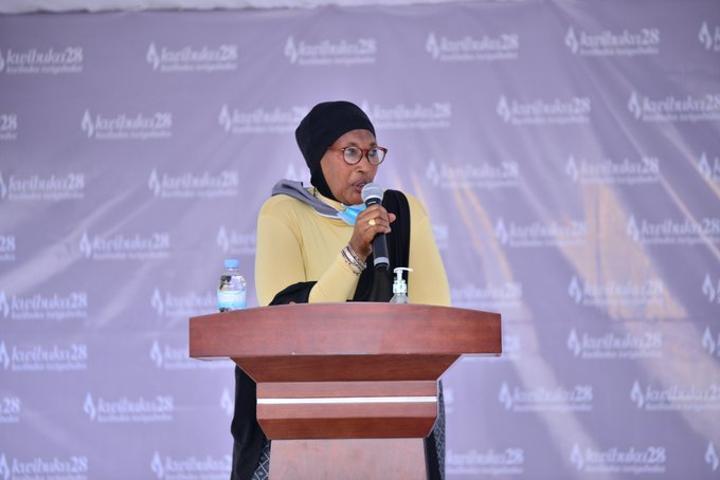
Africa-Press – Rwanda. It was during the morning hours, when eight soldiers arrived at Paulin Rugero’s house in Nyamirambo.
Two of them pointed their guns to both his ears, and told him to open the door to his house without turning around to face it. He did as they commanded.
His wife had given birth a month earlier, but they also had two other children who were playing in the house.
They entered the house and messed everything up. They spilled porridge flour and tore cement bags that were in the house, claiming to be looking for bullets.
They asked him where the bullets were, but he was even shocked that they would think he had a clue. They would hit him every time he replied to their questions.
One of his sons, who was still a toddler, was playing with a toy car, and he got very angry. He went over to the soldier and said: “If you beat my daddy again, I will hit you with my car.”
The soldier then crushed the toy car with his boot and kicked the child away.
His father couldn’t save him, instead he begged for forgiveness on his child’s behalf. “It is me you want, please don’t kill my son,” he pleaded.
This was the beginning of his torture, because after that, he was taken to prison where he spent months. He was even forced to make a statement that he was an RPA soldier who was captured.
It had just been a few days after RPA-Inkotanyi’s 1990 liberation offensive.
One of the inmates would tell Habyarimana’s soldiers, who kept accusing Tutsi of being part of Inkotanyi, “When you see Inkotanyi, you will recognise them,” he would say.
Countless Tutsi people were killed before the Genocide, and Rugero is among the lucky ones who survived.
He narrated his ordeal to mourners who had attended the 28th commemoration of the 1994 Genocide against Tutsi victims on May 6, at the City of Kigali office, where 47 former staff of the Kigali Prefecture who were killed during the Genocide were honoured.
Assia Kagitare, the leader of families of the slain staff said they are still searching for identities of other people who were killed during the Genocide, because they were more than 47.
“They would kill a person, burn their pictures and burn everything,” she said.
The City mayor, Pudence Rubingisa pledged continued support for vulnerable Genocide survivors.
“At a time like this when we reflect on the impact the Genocide had, especially on vulnerable survivors who are challenged in their living, like the elderly, we support them but we are going to keep doing it,” Rubingisa said.
The event was also graced by the minister of Infrastructure, Ernest Nsabimana and Ibuka President, Egide Nkuranga.
During the Genocide, Kigali prefecture was headed by Tharcisse Renzaho, a war criminal and Genocide convict who was the prefect, a Colonel in the Forces armées rwandaises (FAR), and the president of the Civil Defence Committee for Kigali.
He fled Rwanda in July 1994 when RPA-Inkotanyi forces took control of the country, and went to Democratic Republic of the Congo (former Zaire) where he was arrested in 2002. He was being charged with genocide, or, in the alternative, complicity in genocide, crimes against humanity (murder and rape) and war crimes (murder and rape) for his role in the Genocide against Tutsi.
Renzaho was in July 2009, found guilty of genocide, murder and rape as crimes against humanity and murder and rape as war crimes. Specifically, the ICTR concluded that Renzaho had supported the killings of Tutsis at roadblocks, which were set up following his directives.
He was also found guilty to have ordered the distribution of weapons that were later used to kill Tutsis, and that he had supervised a selection process at a refugee site called CELA, where about 40 Tutsis were abducted and killed.
The trial chamber also found that Renzaho had participated in an attack at the Sainte Famille church, where more than 100 Tutsis had been killed, and that he had also encouraged the sexual abuse of women and was found criminally liable for the rape that followed.
Renzaho was sentenced to life imprisonment for his role in these events, and this decision was upheld by the Appeals Chamber in 2011.
Kigali is among the areas that were most hard hit by the Genocide due to the concentration of anti-Tutsi armed forces and militia. Its residents couldn’t even manage to cross over to other parts of the country because of several major roadblocks.
The Kigali Genocide Memorial alone is home to a quarter of all Genocide victims, and it is not the only one in Kigali.
For More News And Analysis About Rwanda Follow Africa-Press





